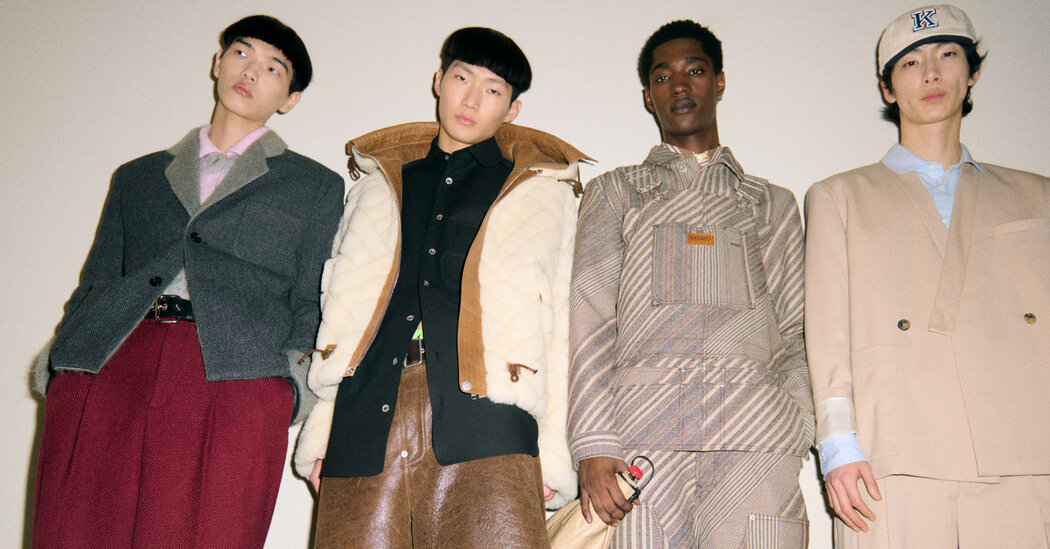There’s always a moment towards the end of the European Fashion Week marathon when you’re dragging, when your eyes go dull as you look at yet another black jacket that you forget as soon as you get up.
It is precisely at this moment that you need a shock: clothes that startle, that defy expectations.
That shock came from a very unexpected place on Friday evening: Kenzo.
The label has had a few chaotic years under creative director Nigo. The collections felt too loaded with merchandise, too bloated with random ideas. I expected more of the same when I walked into Le Palais de Chaillot late Friday.
What I got instead was Kenzo with the fat shaved off. The first act of the show was the strongest: a rotation of overcoats, spongy blazers and cardigans in brushed mohair. In soft shades of gray, pink, yellow and electric blue, they looked like Muppets with sleeves. Charming! It was a palate cleanser while retaining the playful spirit of its founder, Kenzo Takada.
Other heart-raisers in the collection included an overcoat with a picturesque striped pattern crisscrossing the edges, like the leaves of a rubber plant, and some sheepskin shorts. Impractical, yes, but a cool idea nonetheless.
It didn’t all land. A collaboration with Futura 2000, the graffiti artist who made the leap into the high-art world, was jaw-dropping, if only because I’ve heard this song so many times. Futura has collaborated with Nike, Off-White, Louis Vuitton and Comme des Garçons Shirt. It’s probably time for fashion labels to find a new artistic muse.
Still, I left the show on Friday wondering where the Kenzo would go, something I haven’t felt before with Nigo’s Kenzo.
That doesn’t mean that surprise is the most important thing in Paris. A predictably glamorous Amiri show earlier this week – all shiny exotic leather trench coats, swinging Bowie suits and blazers with lapels defined as the jaw of a looksmaxx teenager – still left a strong impression. Mike Amiri remains zoomed in on a vision of luxury straight from the Playboy mansion in 1973. There’s really no reason for him to deviate from that. It works.
Nevertheless, it was the ideas that made me go “huh” that will stick around. On Saturday morning, playful Bulgarian designer Kiko Kostadinov pulled out architectural overcoats, tunics reminiscent of The Legend of Zelda and shirts with Hungarian emblems. And then bam! Here came two models with crocheted ties. Ties! Mr. Kostadinov’s avant buffet was the last place I expected to find those beleaguered corporate jerks. And yet!
The symbolic surprise of the week came from Comme des Garçons Homme Plus, where designer Rei Kawakubo startled the audience, if only because this was really the only show that seemed to acknowledge the broader ills of the world through its clothes. Paris Fashion Week took place around Donald J. Trump’s inauguration, and while political upheavals generated front row chatter, most designers kept their mouths shut when pressed. each issues beyond their borders. (American Willy Chavarria, who made his first appearance in Paris, was perhaps the only designer to utter the name of President Trump or any politician during interviews after his show.)
However, Ms. Kawakubo was not afraid to use her clothes as a topic of conversation. As the models trotted out in surgically modified olive-colored officer’s coats, gold buttons running down the front, shiny boots with straight-up toes, and helmets with flowers on them, it was pretty clear that they were sending a message about the different wars. take place all over the world.
She called the collection To Hell With War. It wasn’t the most new statement, but the shock came when I heard a designer make a statement at all.





